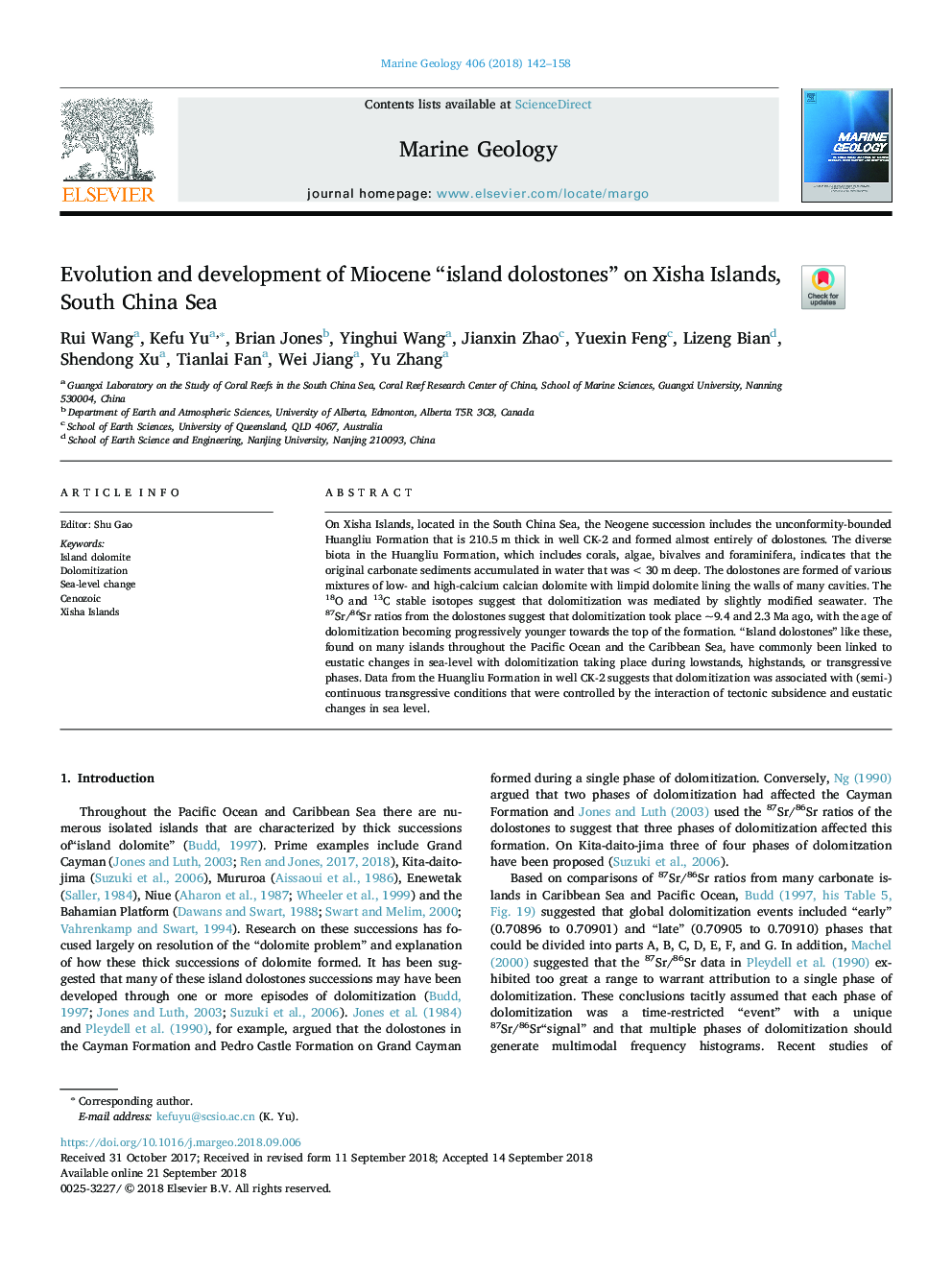| Article ID | Journal | Published Year | Pages | File Type |
|---|---|---|---|---|
| 10997914 | Marine Geology | 2018 | 17 Pages |
Abstract
On Xisha Islands, located in the South China Sea, the Neogene succession includes the unconformity-bounded Huangliu Formation that is 210.5â¯m thick in well CK-2 and formed almost entirely of dolostones. The diverse biota in the Huangliu Formation, which includes corals, algae, bivalves and foraminifera, indicates that the original carbonate sediments accumulated in water that was <30â¯m deep. The dolostones are formed of various mixtures of low- and highâcalcium calcian dolomite with limpid dolomite lining the walls of many cavities. The 18O and 13C stable isotopes suggest that dolomitization was mediated by slightly modified seawater. The 87Sr/86Sr ratios from the dolostones suggest that dolomitization took place ~9.4 and 2.3â¯Ma ago, with the age of dolomitization becoming progressively younger towards the top of the formation. “Island dolostones” like these, found on many islands throughout the Pacific Ocean and the Caribbean Sea, have commonly been linked to eustatic changes in sea-level with dolomitization taking place during lowstands, highstands, or transgressive phases. Data from the Huangliu Formation in well CK-2 suggests that dolomitization was associated with (semi-)continuous transgressive conditions that were controlled by the interaction of tectonic subsidence and eustatic changes in sea level.
Related Topics
Physical Sciences and Engineering
Earth and Planetary Sciences
Geochemistry and Petrology
Authors
Rui Wang, Kefu Yu, Brian Jones, Yinghui Wang, Jianxin Zhao, Yuexin Feng, Lizeng Bian, Shendong Xu, Tianlai Fan, Wei Jiang, Yu Zhang,
